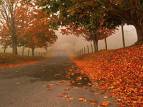Come 17th of Oct and AMU would look new,fresh and breathing all over again.For sometime it would seem we are far from the political playground that the campus has been reduced to.Sir Syed Day meant celebration.The University would be lit up and from some distance it would seem as if sky had come down to kiss the dust of our alma mater.I would think it wasnt without reason that Majaz wrote these powerful lines which all of us proudly sang.If there is one song which arouses the feeling of camarderie,pride and passion it always is the AMU tarana.
The lines that moved all of us are here(courtesy-aligarians.com)
ye meraa chaman hai meraa chaman, maiN apne chaman kaa bulbul huuN
sarshaar-e-nigaah-e-nargis huuN, paa-bastaa-e-gesuu-sumbul huuN
ye meraa chaman hai meraa chaman, maiN apne chaman ka bulbul huuN
jo taaq-e-haram meN roshan hai, vo shamaa yahaaN bhii jaltii hai
jo taaq-e-haram meN roshan hai, vo shamaa yahaaN bhii jaltii hai
is dasht ke goshe-goshe se, ek juu-e-hayaat ubaltii hai
ye dasht-e-junuuN diivaanoN kaa, ye bazm-e-vafaa parvaanoN kii
ye shahr-e-tarab ruumaanoN kaa, ye Khuld-e-bariiN armaanoN ki
ifitrat ne sikhaii hai ham ko,uftaad yahaaN parvaaz yahaaN
gaaye haiN vafaa ke giit yahaaN, chheRaa hai junuuN kaa saaz yahaaN
ye meraa chaman hai meraa chaman, maiN apne chaman ka bulbul huuN
is bazm meN teGheN khenchiiN haiN, is bazm meN saGhar toRe haiN
is bazm meN teGheN khenchiiN haiN, is bazm meN saGhar toRe haiN
is bazm meN aanKh bichaa’ii hai, is bazm meN dil tak joRe haiN
har shaam hai shaam-e-Misr yahaaN, har shab hai shab-e-Sheeraz yahaaN
hai saare jahaaN kaa soz yahaaN aur saare jahaaN kaa saaz yahaaN
zarraat kaa bosaa lene ko, sau baar jhukaa aakaash yahaaN
Khud aankh se ham ne dekhii hai, baatil kii shikast-e-faash yahaaN
ye mera chaman hai mera chaman, main apne chaman ka bulbul hun
jo abr yahaaN se uThThega, vo saare jahaaN par barsegaa
jo abr yahaaN se uThThega, vo saare jahaaN par barsegaa
har juu-e-ravaan par barsegaa, har koh-e-garaaN par barsegaa
har sard-o-saman par barsegaa, har dasht-o-daman par barsegaa
Khud apne chaman par barsegaa, GhairoN ke chaman par barsegaa
har shahr-e-tarab par garjegaa, har qasr-e-tarab par kaRkegaa
ye abr hameshaa barsaa hai, ye abr hameshaa barsegaa
ye abr hameshaa barsaa hai, ye abr hameshaa barsegaa
ye abr hameshaa barsaa hai, ye abr hameshaa barsegaa
barsegaa, barsegaa, barsegaa…………………









